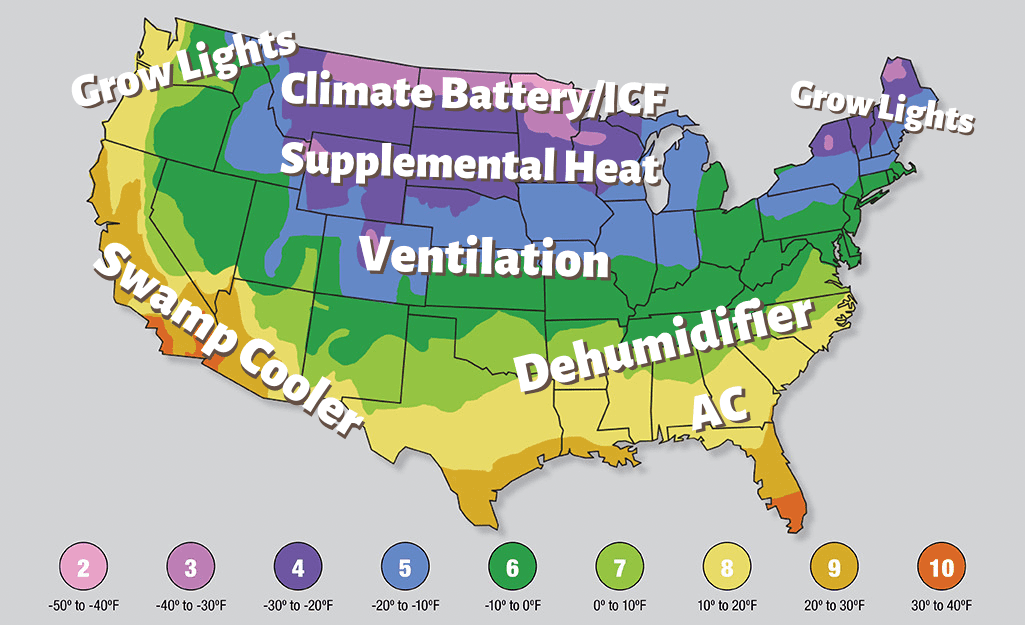
Choosing Growing Dome Options and Upgrades for your Region
Nestled at the base of the southern San Juan Mountains in southwest Colorado, Growing Spaces has literally grown up in the high altitude, dry air, cold nights, and sunny days that characterize the Intermountain West, stretching from northern New Mexico in the south to Montana and into Alberta heading north.
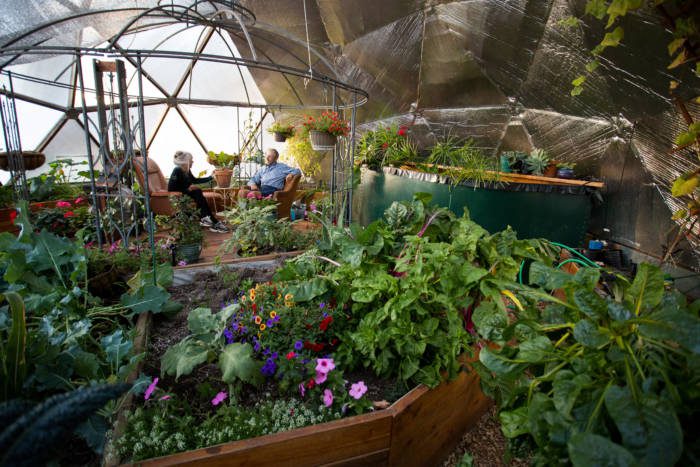
Founders Udgar and Puja Parsons maximized year-round performance in designing and refining the features of our Growing Domes, from the 15’ diameter right on up to the 42’ diameter dome, balancing available sunlight, heat storage in thermal mass, internal air circulation, insulation and ventilation to create a greenhouse environment that supports “Gardens That Thrive 365”.
But let’s say you live in New England, or the Upper Midwest, or Washington State – will a Growing Spaces geodesic dome greenhouse work for you? Good Question! (And the answer is YES!)
Over the years, as our reach has extended to all 50 states and 14 countries worldwide, we’ve developed some components and guidance for customers who live where it may be cloudier, more humid, much colder, or even hotter than the Rocky Mountain West. We like hearing about our Dome owners’ experiences and learning from their feedback and then making improvements to what we offer.
Ventilation
No matter what climate you live in, ventilation is a key factor in controlling the climate in your Growing Dome and providing your plants adequate airflow to stay healthy. Last spring we published a blog on the importance of ventilation in your greenhouse and a page that summarizes all of our greenhouse ventilation systems to help you choose the best options for your Growing Dome.
Location, location, location….
Based on where you live, we consider some basic climate characteristics including summer high temps, winter lows, and relative humidity, along with prevailing winds and propensity for strong storms. A map like this gives us some solid information on your Growing Dome’s environment. Putting that together with what you tell us about these factors, we suggest Customization Options to make your greenhouse right for your climate.
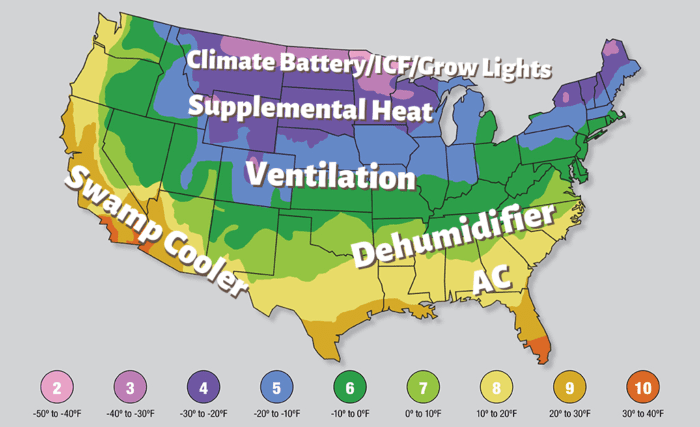
Twin Wall or MultiWall Polycarbonate – how much insulation do you need?
To determine whether the right balance of insulating value of the polycarbonate and solar transmittance we use the Plant Hardiness Zones map: for zones 8b and warmer, we recommend Twin Wall (R-value 1.7); all other zones are optimized with Multi-Wall polycarbonate (R 2.8).
Storing up the Sun’s energy
A greenhouse’s raison d’etre is to trap heat. But how long can it hold that heat? What happens when the outside temperature drops to 10°F at night? (For hot climates, more on cooling later in this post.) You need some place to store it, a “heat sink” that stores up the sun’s heat energy and then slowly releases it to the surrounding cooler air at night as outside temperatures drop.
Enter the above-ground pond!
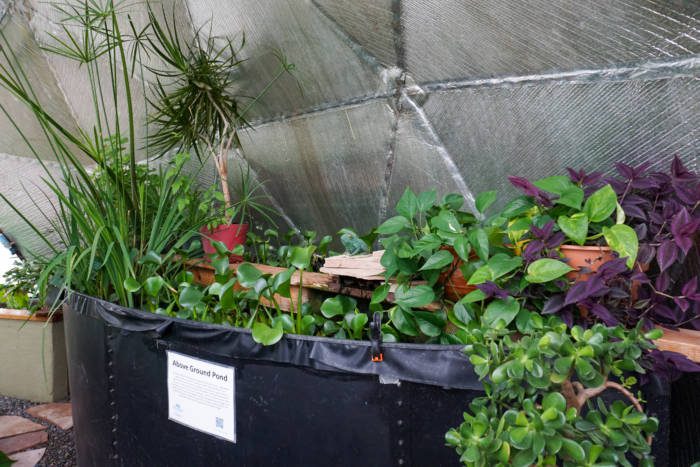
Water has a high capacity to hold heat energy, much higher than air. Our tanks are designed in shape and in volume to maximize solar gain during the day and to hold the right amount of heat energy for sustaining above-freezing temps overnight.
Specifically, our Growing Dome is designed to keep the inside temperature about 30°F warmer than the outside temperature at night, after 4-6 hours of solar gain during the day. So, if you live in a climate region where winter lows are typically above 0°F and you have plenty of sunny or mostly sunny days, you’re in kale and chard heaven!
The pond is not only a heat source, but also be used to create a beautiful pond garden. Proper pond care and maintenance is also very important. For new Growing Dome owners, make sure to test your water to ensure it is safe for plants and fish. And when using tap water, use an additive like API Stress Coat to remove contaminates. We have created a simple pond care kit for new dome owners to help maintain their water tank.
But what if you live where it’s either much hotter or much colder? Here are your options….
First, there are a couple of categories of options and upgrades: those that Growing Spaces sells and ships with your kit such as solar-powered fans, and those that are much more cost-effective to purchase locally, such as heaters or cooling units – we’re happy to share recommendations for these DIY items.
Next, the best options for your Dome to complement your climate conditions:

Humid climates require more ventilation than arid climates. So, we offer solar and electric fan kits, additional vents, a solar-powered attic fan for the larger domes, and also in the larger domes, a second entry door for cross-ventilation (most owners install standard screen doors inside the outer door to keep critters out while maximizing air movement on summer days.) Follow the links to a description of each component kit.
For hot and humid south-central and southeastern parts of the U.S., we might recommend an air conditioning unit or dehumidifier.
We recommend:
Quest 70 Pint Hanging Dehumidifier
Ideal-Air Pro Series Portable Dehumidifier
Hot arid climates in the Southwest can utilize an evaporative cooling effectively, and our Desert Cooling Package, which includes a fan and a misting system, can drop temps inside your dome by 10-15°F. For serious summer heat, we can recommend an evaporative cooler or solar cooler for those who want to be off-grid.
We also always recommend providing as much natural shade in your greenhouse in the summer, by planting large leaf trees or training vines on the South and West sides of your domes.
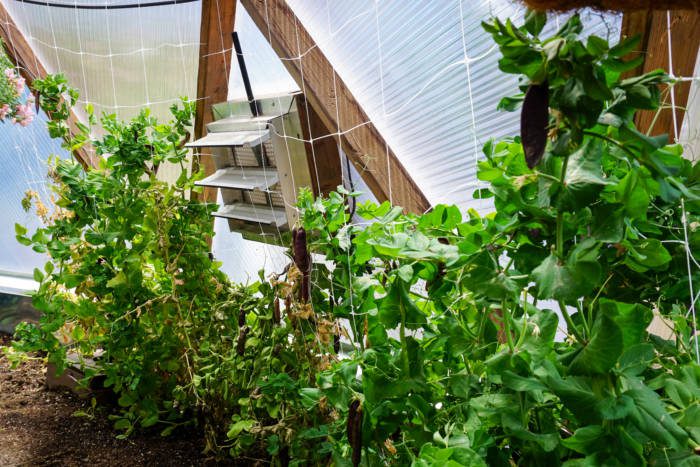
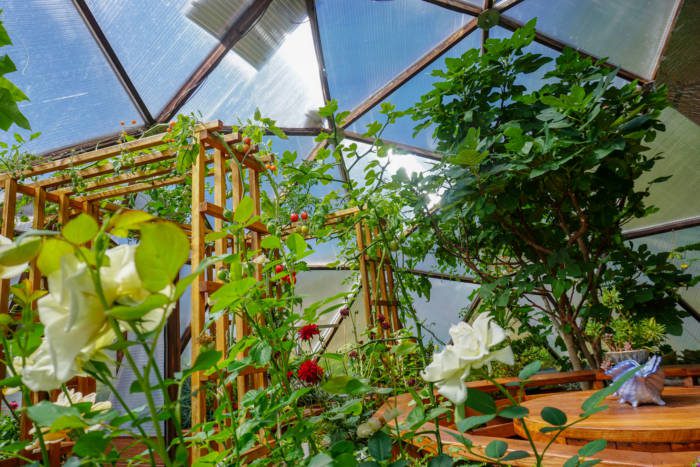
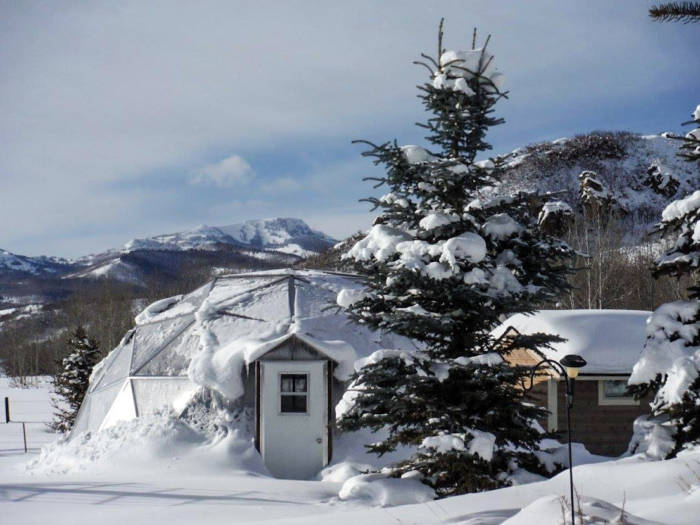
In very high mountain or in mid-continent cold climates, or locations with prolonged cloudy weather, you will likely need some additional heat source to provide a growing environment in winter. These fall into the DIY category, but we can offer suggestions based on experience for heating your Growing Dome.
We recommend: https://www.mrheater.com/
For colder climates, you may want to consider Insulated Concrete Forms (ICF) for your foundation wall, either below grade or above grade. This will give your Grow Dome additional protection against frost and prolonged cold weather. Some dome owners have also installed a “climate battery” under their domes, utilizing the earth’s even 55°F air to keep the Dome warm. (One customer installed a radiant “floor” with circulating water from a wood-fired boiler, so you can creatively work with your own skills, resources, and preferences.)
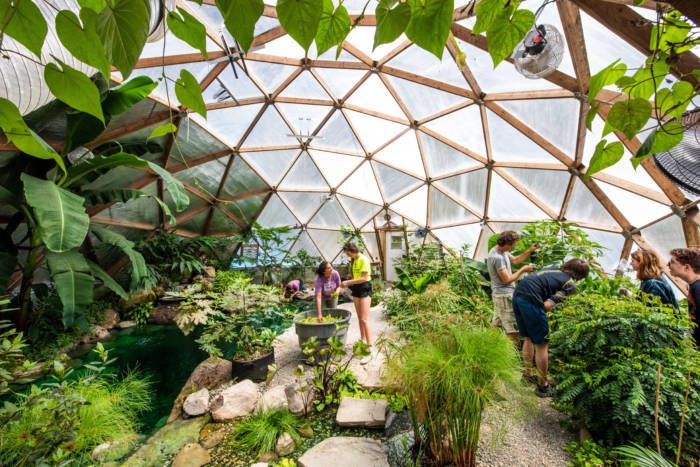
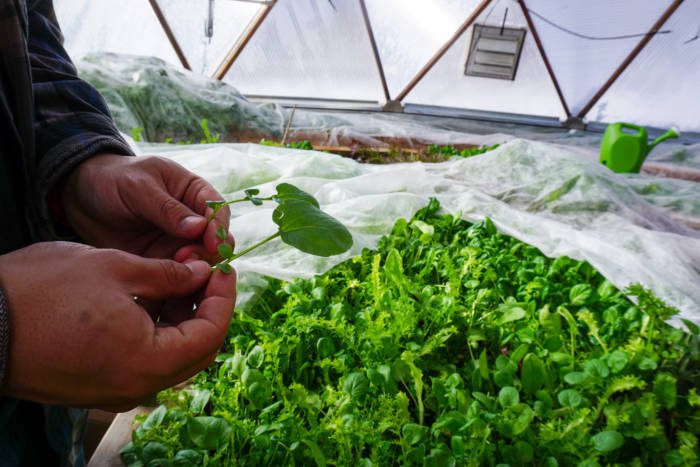
Row covers are a great way to help protect your plants, especially starts, from getting damaged from cold and frost. In addition to the pond, the soil in your beds is a very efficient thermal mass and row covers can help trap that heat and keep it close to your plants where it is needed most. Remember how your mother always said to put a hat on when you get cold, as 80% of your body heat escapes through your head? Well, think of row covers as a hat for your plants!
We recommend: Dalen Harvest Guard or Agribon

In the far northern latitudes, you will also likely need to extend the amount of light your plants get, so grow lights may be necessary for the shortest days to keep the level of production where you want it. You may consider running electricity to your Dome if you plan on adding grow lights.
We recommend:
AgroLED® Sun® 411 Veg LED Fixtures 6,500° K + Blue + UV
Our Facebook Group, “Growing Dome Enthusiasts,” has members from all around the world, so you can get more specific advice for your region. Our team of Growing dome Advisors are also here to answer your questions and help guide you through the process of choosing the best options for your climate. Contact us today!


2 Comments
Love these greenhouses and looking to buy a 33 ft. Our only issue is we’d love to have the option to purchase cedar instead of pressure treated wood. The Canadian affiliate Artic Acres gives you the option to switch to cedar. Is there anyway we could have this option as well?
I would call and talk to one of our dome advisors. Cedar doesn’t handle a heavy snow load so that’s something to ask them about. Our office hours are 8 am – 5pm M-F Mountain time and the phone is 800-753-9333. Happy gardening!